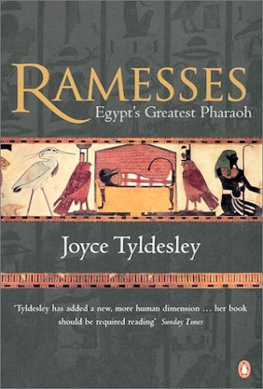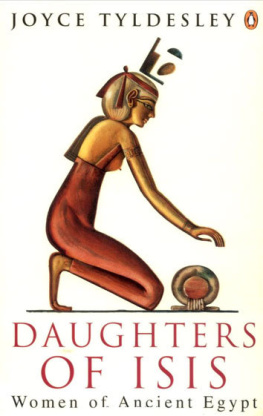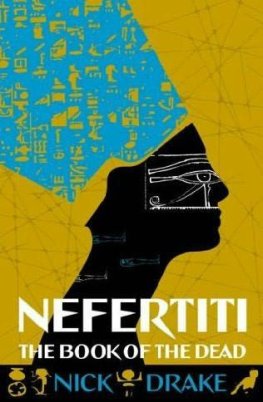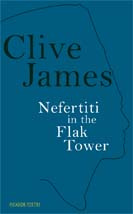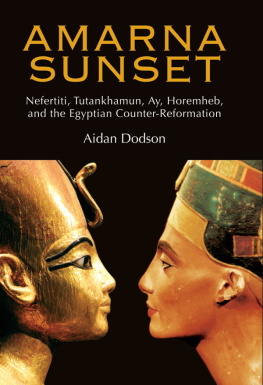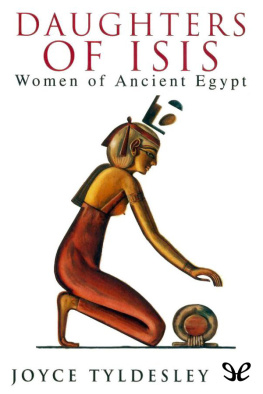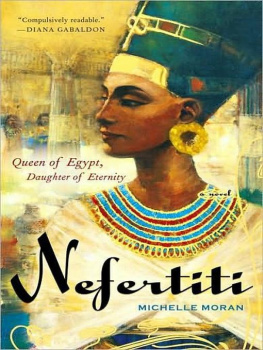PENGUIN BOOKS
NEFERTITI
Joyce Ann Tyldesley was born in Bolton, Lancashire. She gained a first-class honours degree in archaeology from Liverpool University in 1981 and a doctorate from Oxford University in 1986. She is now Honorary Research Fellow at the School of Archaeology, Classics and Oriental Studies at Liverpool University, and a freelance writer and lecturer on Egyptian archaeology. Her previous books include Daughters of Isis, Hatchepsut, Ramesses, The Private Lives of the Pharaohs, Egypts Golden Empire, Judgement of the Pharaoh, The Mummy, Pyramids and Tales from Ancient Egypt.
NEFERTITI
EGYPT S SUN QUEEN

JOYCE TYLDESLEY
Revised edition

PENGUIN BOOKS
PENGUIN BOOKS
Published by the Penguin Group
Penguin Books Ltd, 80 Strand, London WC2R 0RL , England
Penguin Group (USA) Inc., 375 Hudson Street, New York, New York 10014, USA
Penguin Group (Canada), 10 Alcorn Avenue, Toronto, Ontario, Canada M4V 3B2
(a division of Pearson Penguin Canada Inc.)
Penguin Ireland, 25 St Stephens Green, Dublin 2, Ireland
(a division of Penguin Books Ltd)
Penguin Group (Australia), 250 Camberwell Road,
Camberwell, Victoria 3124, Australia (a division of Pearson Australia Group Pty Ltd)
Penguin Books India Pvt Ltd, 11 Community Centre,
Panchsheel Park, New Delhi 110 017, India
Penguin Group (NZ), cnr Airborne and Rosedale Roads, Albany,
Auckland 1310, New Zealand (a division of Pearson New Zealand Ltd)
Penguin Books (South Africa) (Pty) Ltd, 24 Sturdee Avenue,
Rosebank 2196, South Africa
Penguin Books Ltd, Registered Offices: 80 Strand, London WC2R 0RL , England
www.penguin.com
First published in Viking 1998
Published in Penguin Books 2003
This edition with revisions published in Penguin Books 2005
Copyright Joyce Tyldesley, 1998, 2005
All rights reserved
The moral right of the author has been asserted
Except in the United States of America, this book is sold subject to the condition that it shall not, by way of trade or otherwise, be lent, re-sold, hired out, or otherwise circulated without the publishers prior consent in any form of binding or cover other than that in which it is published and without a similar condition including this condition being imposed on the subsequent purchaser
ISBN: 978-0-14-194979-6
For Frank and Su,
who in the past eight years
have been joined by
Louisa and Phoebe.
Contents
Plates
replica of the Berlin head reproduced on the cover, in Bolton Museum & Art Gallery, Bolton)
Photographic Acknowledgements
AKG London:
Author collection:
Bildarchiv Preuischer Kulturbesitz, Berlin:
British Museum, London:
Bulloz, Paris:
The Cleveland Museum of Art, Ohio:
C M Dixon, Canterbury:
E T Archive, London:
Giraudon, Paris:
National Museum, Cairo:
Werner Forman Archive, London:
Figures
Chapter 1
Chapter 2
Chapter 3
Chapter 4
Chapter 5
Chapter 6
Chapter 7
Epilogue
Map and Chronologies
The Amarna Royal Family
Acknowledgements
I would like to express my gratitude to all those involved in the writing of this book. Thanks are due to Eleo Gordon and Sheila Watson who gave practical advice whenever needed, to Professor Elizabeth Slater for use of the facilities of the Department of Archaeology, Liverpool University, and to the members of the Liverpool University S.E.S. photography department. The wonderful line drawings of Norman de Garis Davies are here reproduced by kind permission of the Egypt Exploration Society. Joyce Filer provided invaluable help with the identification of the bones from KV 55. Finally I must thank my husband, Steven Snape, and my children, Philippa and Jack.
Preface
In 1997 I wrote a book telling the story of Nefertitis life. A year later that book was published as Nefertiti: Egypts Sun Queen. Not exactly a biography we lack too many of the major details and all of the minutiae and trivia of daily life to be able to write a full and unbiased history of any character from ancient Egypt the book nevertheless included all the known archaeological and textual evidence concerning the life and death of Egypts most famous queen.
Egyptology books can quickly become dated. Since my original book was published there has been a steady stream of scholarly publications concerning Nefertiti and her husband, the unorthodox pharaoh Akhenaten, plus a flurry of more speculative books, each claiming to reveal their own particular truth about Nefertiti. In addition, there have been important developments in the field of mummy studies. While our understanding of Nefertitis life remains fundamentally unchanged, our understanding of her death, or rather the treatment of her body beyond death, has been challenged by recent re-discoveries in the Valley of the Kings. The Amarna period, never simple, has grown alarmingly complex. We now have, in KV 55, a once-female mummy definitely reclassified as a young royal male, while in nearby KV 35 there rests a once-male mummy reclassified as a female and a queen of Egypt, too who may perhaps be male after all.
The intervening seven years seven years of reading and of discussions with colleagues, students and friends have also brought changes in my own understanding of the complexities of the Amarna age, and in particular the complexities of Amarna art. This therefore seems a good time to revise my original book. To eliminate the few factual errors and emotive assumptions that crept into the original text, to delete some of the endnotes which are not strictly necessary to my argument and which seem to annoy some readers, to revise the bibliography, and to expand chapters six and seven to take account of recent fieldwork. I have taken a fresh look at all the evidence for the life and times of Nefertiti, and have built on this to provide my own explanation of events at the end of the Amarna age.
Introduction

The Hereditary Princess, Great in Favour, Lady of Grace, Endowed with Gladness. The Aten rises to shed favour on her and sets to multiply her love. The great and beloved wife of the King, Mistress of South and North, Lady of the Two Lands Nefertiti, may she live for ever.
For just over a decade Queen Nefertiti was the most influential woman in the ancient world. Standing proud beside her husband Akhenaten, Nefertiti was the envy of all; a beautiful, fertile woman blessed by the sun-god, adored by her six daughters and worshipped by her people. Her image and her name were celebrated throughout Egypt and her future seemed golden. Suddenly Nefertiti disappeared from the heart of the royal family. No record survives to detail her death, no monument serves to mark her passing, and to this day her end remains an enigma. Nefertitis body has never been recovered.
Soon after Nefertitis disappearance her husbands unorthodox reign was erased from Egypts official record. With history successfully rewritten, king and queen were conveniently forgotten. It was as if Nefertiti and Akhenaten had never been. The decoding of the hieroglyphic script at the beginning of the nineteenth century restored Nefertitis name to scholars, but she remained a shadowy figure, merely one amongst the many faceless queens of Egypt. It was left to archaeology to return her to her unique position in Egyptian history. A succession of egyptologists excavating at the Middle Egyptian site of Amarna did much to reconstruct her story, but it was not until 1924, when a painted limestone bust was put on display in Berlin Museum, that the general public became aware of Nefertitis existence (Ever since, this image of Nefertiti has stood alongside the death mask of Tutankhamen, the pyramids of Giza and the sphinx as a universally recognized symbol of Egypts history. Nefertiti now gazes out from a wide variety of tourist-orientated bric--brac. Anything which could feasibly be embellished with her head has been, and the hapless holidaymaker looking for a suitable souvenir is presented with a tempting display ranging from Nefertiti earrings to key-rings, postcards, playing cards, tea-towels, tablecloths and of course ancient papyri. Even the carrier bags from Cairo airports duty-free shop display Nefertitis image, and many of the tourists carefully selecting their Nefertiti-enhanced T-shirts seem completely unaware that the original bust is actually housed almost two thousand miles away in Berlin.


